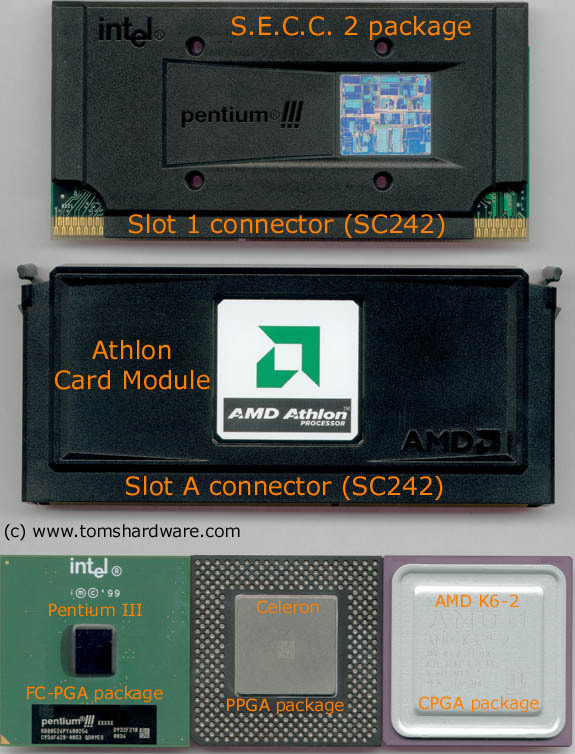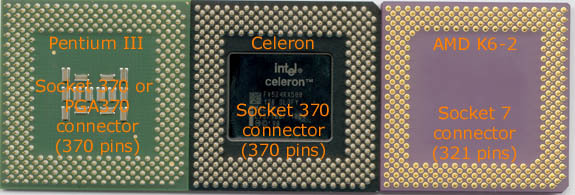Processor and Chipset Tables: How to Configure a CPU Correctly
Packages And Pinning: The Differences Between FC-PGA, PPGA, CPGA, Slot 1, Slot A, Socket 370 And Socket 7 In Illustrations
Chaos has been the order of the day from the moment that Intel offered its new Pentium III (Coppermine) as FC-PGA and SECC2 variations. If you take a look at the latest retailer lists, you'll see that in some cases the Pentium III in FC-PGA is mistakenly listed as a 'Slot 1' device. That's definitely wrong. So what should one know? Basically, the CPU manufacturers distinguish between the packaging and the pinning. This is what processors look like in reality.
Here again is a view of the back of the socketed CPUs. Although the dimensions of the socket 7 and socket 370 devices is the same, these processors have different numbers of pins. Socket 7 CPUs have 321 pins, whereas socket 370 devices have 370 pins.
Note that socket 370 CPUs (Celeron and Pentium III FC-PGA devices) have different pin-outs and different operating voltages. Socket 370 devices are therefore not the same as socket 370 devices! More recent motherboards support both CPUs. Older motherboards (up to December 1999) however, can only support the 'old' Celeron (up to 533 MHz) and can't be used with the Pentium III FC-PGA or Celerons over 566 MHz with Coppermine core. The latter require lower voltages from 1.65V or even 1.50V.
The same applies to Slot 1 and Slot A. Both connections are mechanically identical - hence the label 'SC242' in parenthesis - however, they are not electrically compatible. AMD's Athlon (Slot A) has a totally different bus protocol to the Pentium II and III. In addition, the chipsets for both CPUs are different. An Athlon can be physically fitted into to a slot 1 board, but it will never work there...
Get Tom's Hardware's best news and in-depth reviews, straight to your inbox.
Current page: Packages And Pinning: The Differences Between FC-PGA, PPGA, CPGA, Slot 1, Slot A, Socket 370 And Socket 7 In Illustrations
Prev Page Chipsets And Corresponding Processors Next Page Core Voltage And The Manufacturing Process For Athlon Processors
Patrick Schmid was the editor-in-chief for Tom's Hardware from 2005 to 2006. He wrote numerous articles on a wide range of hardware topics, including storage, CPUs, and system builds.

